Key takeaways:
- User feedback is essential for aligning services with client expectations and improving relationships.
- Effective feedback collection strategies include timing surveys, offering incentives, and personal outreach to clients.
- Analyzing user insights can reveal critical patterns and emotional aspects that inform content strategies and service improvements.
- Continuous interaction with users through feedback sharing and community engagement fosters loyalty and a sense of empowerment.
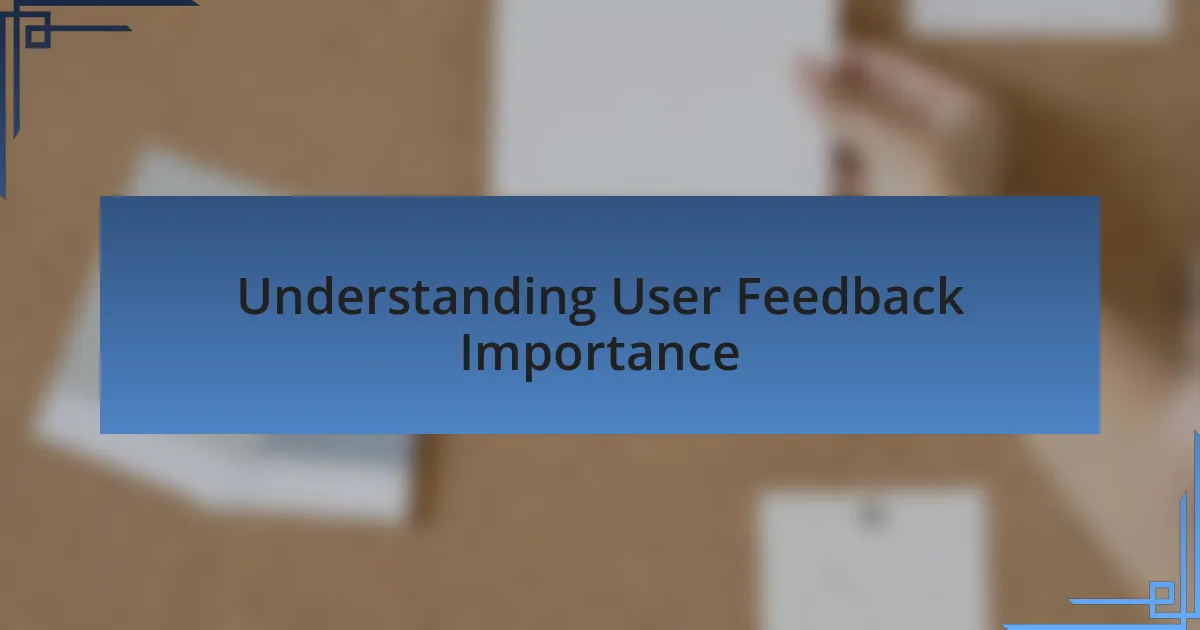
Understanding User Feedback Importance
Understanding user feedback is crucial because it establishes a direct line of communication between the agency and its clients. I remember a time when we launched a new service without fully grasping our audience’s needs. The feedback we received, while sometimes tough to digest, ultimately shaped our offerings into something far more aligned with client expectations.
When clients share their opinions, they’re providing invaluable insights that can drive improvement. I often think about how easy it is to overlook this feedback in the hustle of daily operations. Yet, in my experience, embracing criticism has led to significant transformations that not only benefited our services but also deepened client relationships.
Moreover, user feedback often reveals trends and pain points that may not be visible from the inside. Have you ever experienced that moment when a small suggestion turns into a game changer? It’s fascinating how a single piece of feedback can spark a major overhaul, demonstrating its true power in shaping a better user experience.
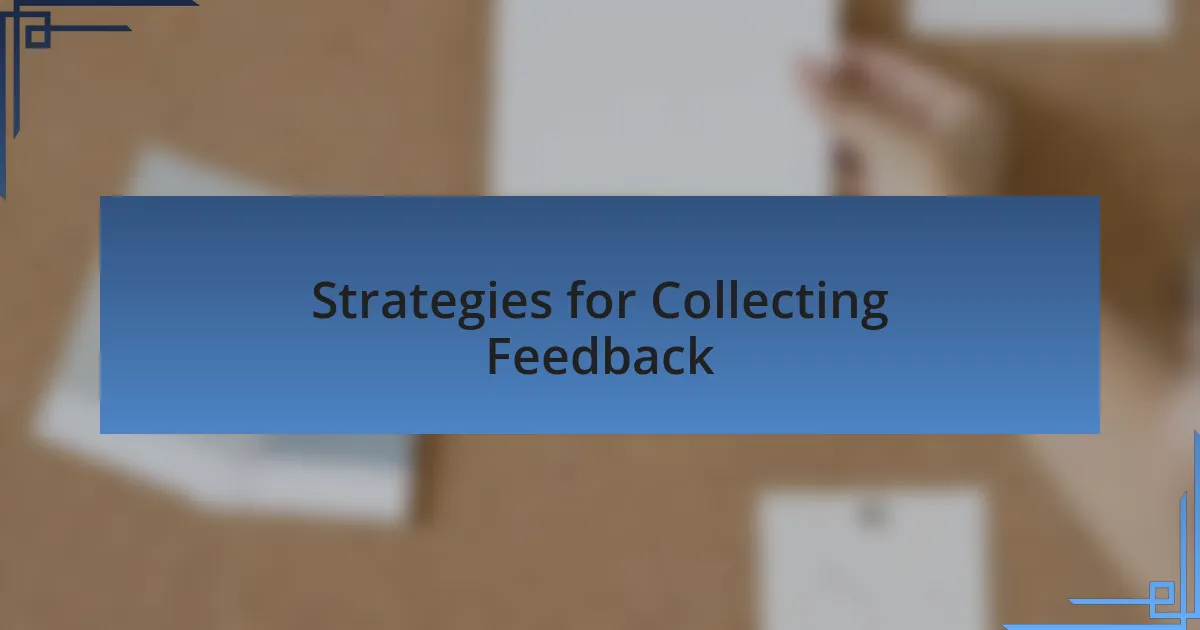
Strategies for Collecting Feedback
When I think about collecting feedback, I often reflect on the importance of timing. For example, sending out surveys right after a project completion can yield richer insights. Recently, I experimented with a brief feedback form immediately after a webinar we hosted. The responses poured in fast, giving us a clear picture of what resonated with our audience and what fell flat. Don’t you find it intriguing how immediate reactions often hold more weight than retrospective thoughts?
Another strategy I’ve found effective is offering incentives for feedback. One time, we ran a small contest where clients could win a free consultation for participating in a survey. To my surprise, the number of responses skyrocketed. It’s as if the small reward turned feedback into a collaborative opportunity rather than a chore. Have you considered how engaging clients in this way might not only gather insights but also enhance their loyalty to your agency?
Personal touch can also make a significant difference in encouraging feedback. In my experience, reaching out directly to clients for their opinions creates a more intimate dialogue. I vividly remember calling a long-term client to discuss their experience with our latest campaign. The personal interaction fostered openness, and they shared insights that transformed our approach moving forward. Have you ever noticed how simple gestures can open doors to deeper conversations?
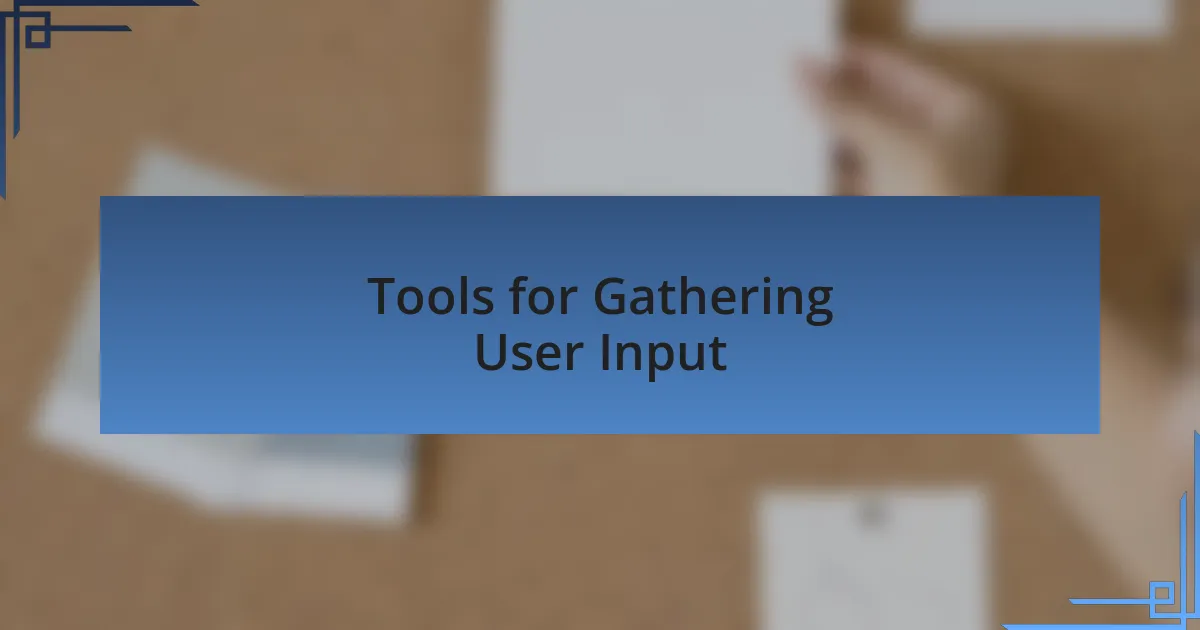
Tools for Gathering User Input
Gathering user input effectively can be greatly enhanced through specialized tools tailored to your audience’s needs. For instance, I often utilize online survey platforms like SurveyMonkey. The ease of customizing questions and analyzing results is invaluable—I remember one time running a user experience survey that provided definitive data showing our site’s navigation issues. Isn’t it fascinating how just one tool can illuminate complex user behaviors?
Additionally, feedback widgets on the website can serve as a constant reminder for users to share their thoughts. I implemented a small feedback button on our site after noticing clients often had quick insights to share but lacked an easy way to do so. The result? A steady stream of spontaneous, valuable feedback. Have you considered how a simple feature could drastically improve not only the data you collect but also the user experience overall?
Don’t overlook the power of social media listening tools, either. I recall a time when our social media manager used Brand24 to monitor mentions about our agency. The insights gleaned from real-time conversations allowed us to pivot our strategies immediately. It’s remarkable how proactive engagement can lead to more authentic feedback—aren’t we all eager to know what our clients genuinely think when they feel uninhibited?
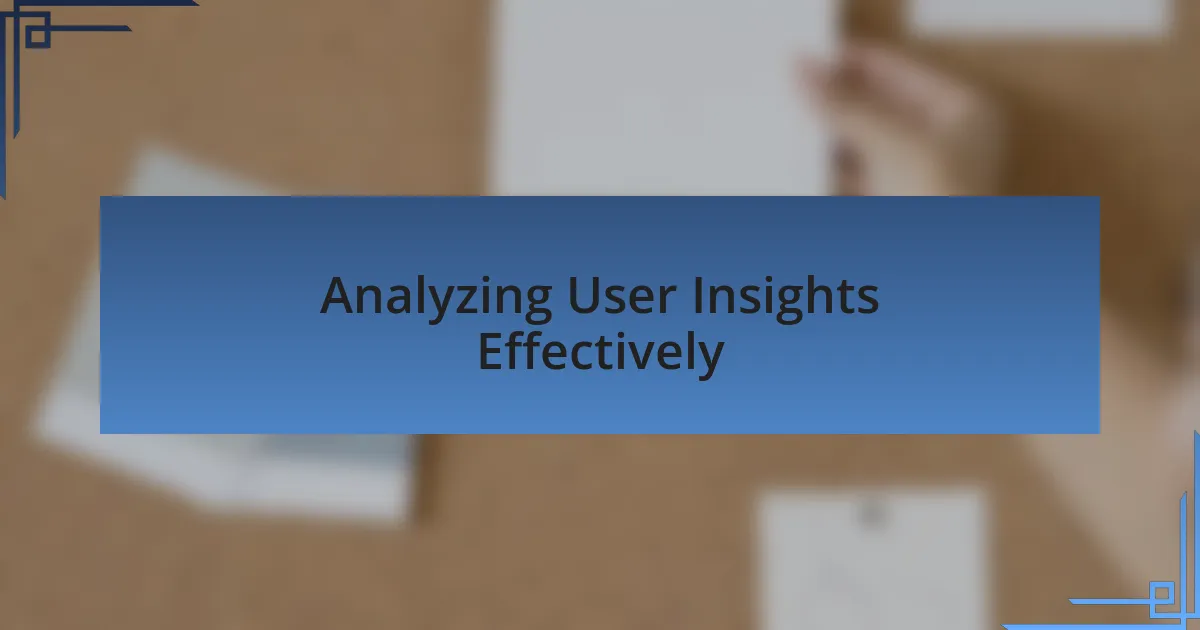
Analyzing User Insights Effectively
Analyzing user insights is where the real magic happens for any digital marketing agency. I remember poring over data from a recent survey and realizing that users were confused by our messaging. It was like a light bulb went off—what I thought was clear communication was actually muddled. This epiphany helped me refine our messaging strategy to resonate better with our audience. Have you ever had a moment where you suddenly understood your users in a whole new light?
As I dug deeper into the analytics, I found patterns that went beyond surface-level feedback. For instance, segmenting user responses by demographics revealed that a younger audience preferred more visual content, while older users valued in-depth articles. This distinction was a game-changer for our content planning. I felt a rush of excitement knowing we could cater specifically to these different needs. Isn’t it incredible how targeted insights can shape your entire content strategy?
Moreover, qualitative insights from user interviews added emotional depth to the numbers. I once spoke with a client who shared their frustrations about our onboarding process. Hearing their passion and pain points in their own words ignited a desire to create a more user-friendly experience. It’s these stories that breathe life into data, don’t you think? They remind us that behind every feedback point is a real person looking for a solution.
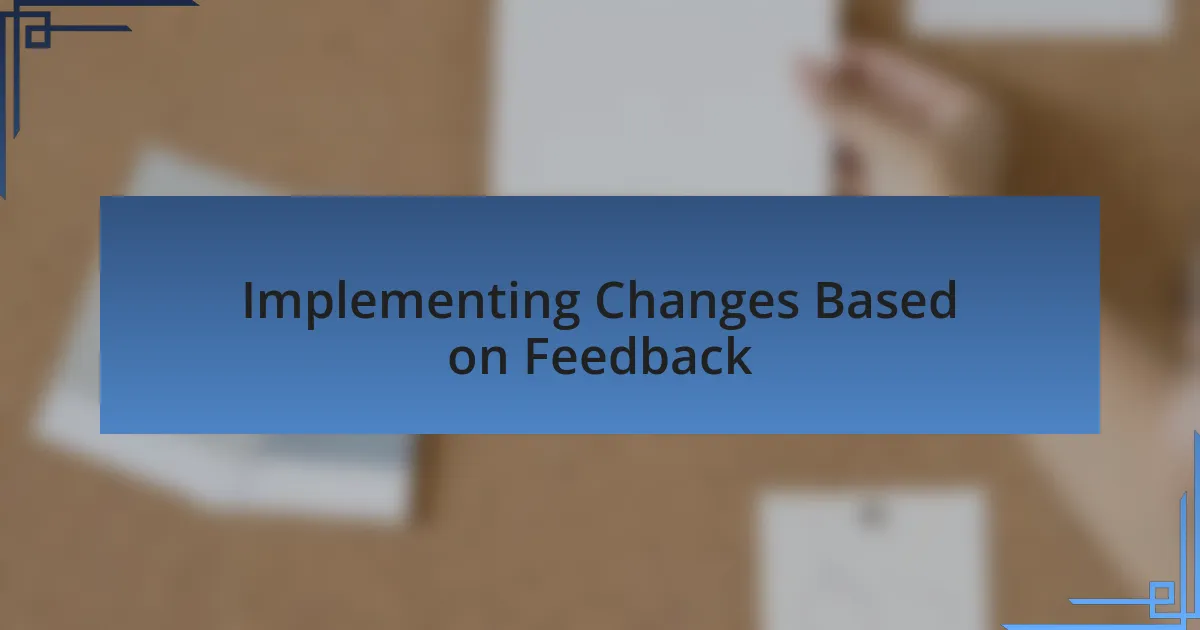
Implementing Changes Based on Feedback
Once we gathered feedback, implementing changes became an exhilarating process. I vividly recall a time when we revamped our website after users mentioned they struggled with navigation. We simplified menus and reorganized content based on their suggestions. The result? A noticeable drop in bounce rates and an uptick in user engagement. Isn’t it rewarding to see direct outcomes from listening to your users?
In another instance, integrating a feedback loop led us to identify gaps in our service offerings. One client expressed a desire for more SEO consultation. By diving into those requests, I felt motivated to train our team and introduce personalized SEO strategies. This not only filled a service gap but also strengthened our relationship with clients, proving that feedback is a powerful catalyst for growth. Have you ever felt that surge of inspiration when you act on what your audience genuinely wants?
Listening to our client’s voice transformed our approach. Implementing changes based on feedback isn’t just about adjustments; it’s about fostering a culture of trust and collaboration. Each change we made was a step towards deeper connections with our audience, reaffirming that their opinions are invaluable in shaping our services. This experience taught me that feedback isn’t just a tool—it’s the heartbeat of a responsive digital marketing agency.
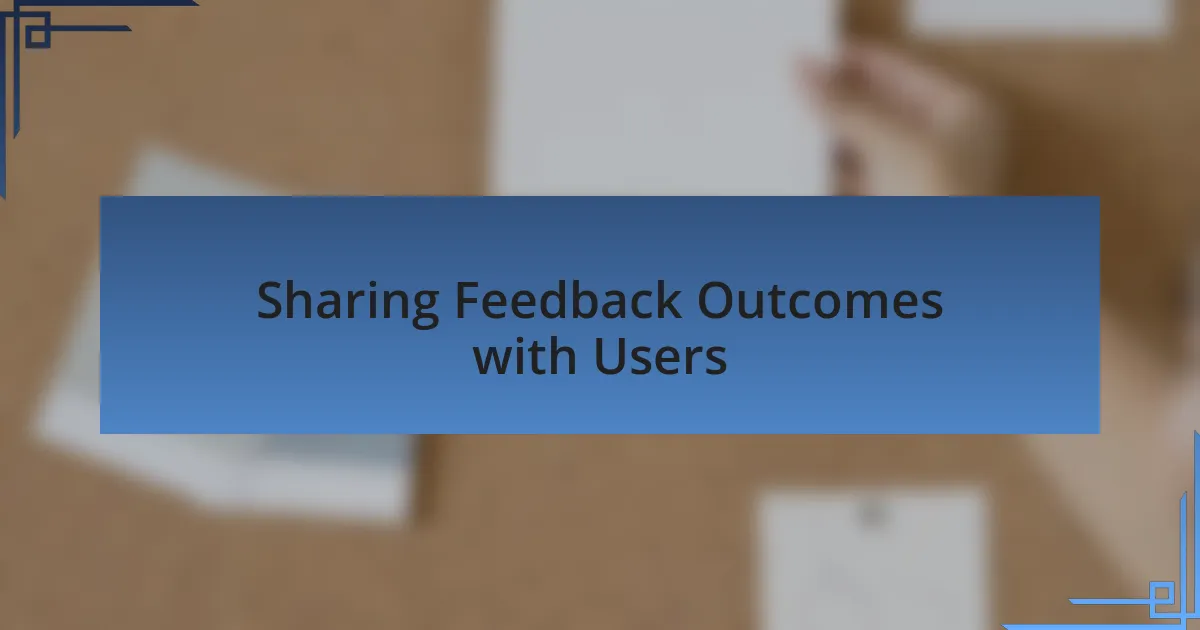
Sharing Feedback Outcomes with Users
After implementing changes based on user feedback, I always felt it was crucial to share those outcomes with our users. One time, after streamlining our content based on client insights, we sent out a detailed newsletter describing the adjustments and the positive impact they had. The responses were heartwarming; users expressed appreciation for being part of the decision-making process. Isn’t it amazing how transparency can enhance trust and loyalty?
In another instance, we created a dedicated section on our website to showcase feedback results and the subsequent changes. This initiative allowed users to see a timeline of improvements, giving them not just insights but also a sense of involvement. I remember a client reaching out to say how empowered they felt knowing their suggestions mattered. Isn’t that a beautiful validation of our collective journey?
Additionally, I often encouraged users to continue sharing their thoughts even after changes were made. By asking them directly how they felt about the improvements, I fostered an ongoing dialogue that turned occasional feedback into a continuous conversation. This approach not only made users feel valued but also deepened our understanding of their needs. Can you recall a time when you felt genuinely heard? That’s the magic I aimed to replicate at every turn.
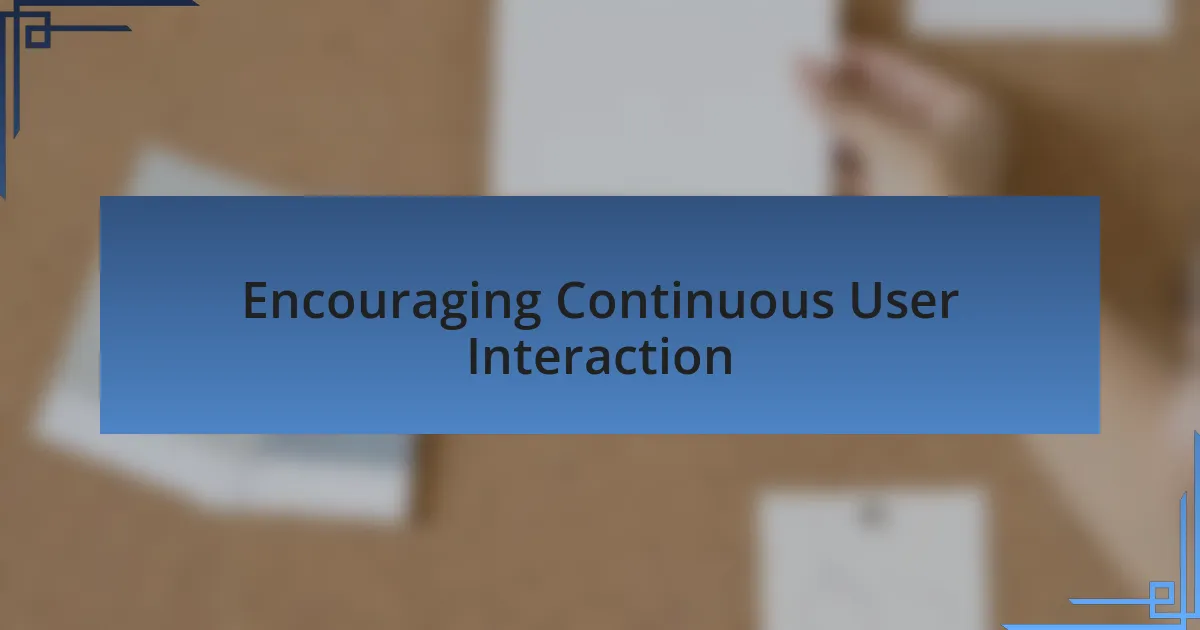
Encouraging Continuous User Interaction
In my experience, creating engaging touchpoints can significantly promote continuous user interaction. For instance, I once initiated a quarterly feedback survey, but instead of simply collecting data, I turned it into a community event. We hosted a live session where users could discuss their experiences and suggestions in real time. The energy in that virtual room was incredible, and many participants left feeling like they were part of something bigger. How often do you get to voice your thoughts directly to a brand’s decision-makers?
Encouraging continuous interaction often means seizing opportunities to share knowledge and insights. I remember when we organized monthly webinars that not only covered industry trends but also incorporated user feedback into the topics. By tying their input to the content, users felt like they were co-creators. This not only maintained their interest but also fostered a sense of belonging. Have you ever felt more connected to a brand after being invited to share your perspective?
I actively sought to bring value in every interaction, understanding that this keeps the conversation going. For example, I regularly sent personalized follow-ups to users who provided feedback, asking if they noticed any changes related to their suggestions. This commitment showed them that their voices mattered and kept them engaged with our platform. Do you remember a time when your input led to real change? That feeling of empowerment can drive ongoing interaction in remarkable ways.